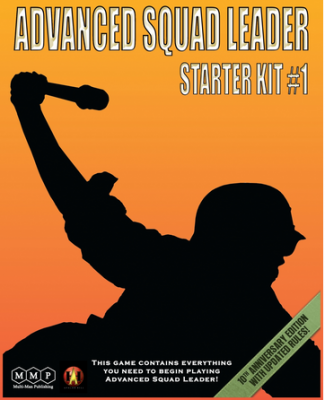How to win at Advanced Squad Leader Guaranteed!
By David Garvin
There are many people who are much better gamers than I. From them, I have learned so much. I have discussed elsewhere some of my education in gaming, especially in Advanced Squad Leader. Many of these lessons were learned the hard way. I have set up some units illegally, only to have them removed upon discovery. I have miscalculated the Dice Roll Modifiers (DRM) of an attack. I have done many egregious errors.
But none have been as bad as misreading the victory conditions for a scenario. Or, more accurately, misunderstanding them. A of mine here on No Dice, No Glory led to some great discussion out on the internet. One point that kept coming up was that in about one-third of all games, one side or the other will have an incorrect idea of how to win. This article will discuss what players ought to do in order to ensure a complete understanding of how to win their scenario.

 By David Garvin
By David Garvin